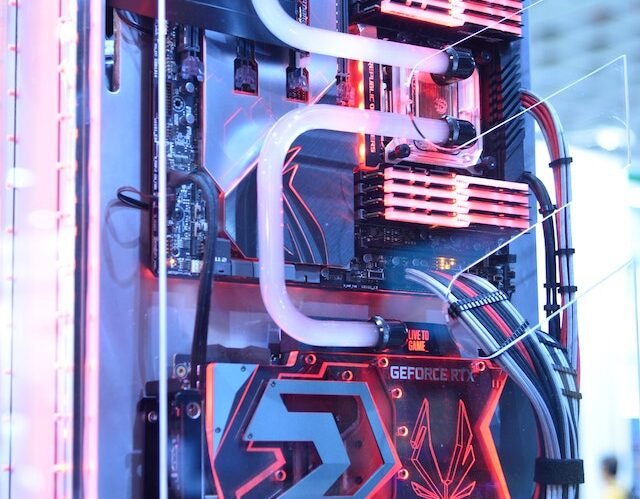What is cooling with water?
Reduce the temperature of computer processor units (CPUs) and occasionally graphics processor units (GPUs) by using water cooling, also known as liquid cooling.
Since water can conduct heat about 30 times more quickly than air, it is used in this process as the cooling medium rather than air. Additionally, a water cooling system lowers system noise while enabling computer components to operate at higher speeds.
Whenever an electronic device is in use, heat is produced. The amount of heat produced rises as computer components become faster and smaller, and it is more concentrated in restricted spaces.
Heat sinks, heat pipes, and fans were traditionally used to cool the system and remove heat from the components during air cooling. However, some computer systems produce more heat than can be dissipated by conventional air cooling.
This is typical in systems with multiple GPUs, high densities, or overclocked CPUs. These high-performance systems can operate faster, cooler, and quieter thanks to water cooling, which can remove heat more quickly and effectively.
A liquid, typically water, is pumped through pipes in systems that use water cooling. The liquid absorbs the heat produced by the parts and releases it in a radiator.
The use of water cooling is most prevalent in personal computers and gaming computers because it enables Overclocking of the CPU and GPU while maintaining proper component cooling. This can lengthen the component lifespan and make it possible to build extremely compact systems using high-power components.
Water-cooled system components and types
A water block, pump, radiator, pipes, and, optionally, a reservoir are the components of a water cooling system. The liquid is forced through the system by the pump. The heat is transferred from the component to the liquid as the pumped liquid passes through the water block, which is connected to the CPU or GPU. More than one water block may be present in a single system.
The heated water enters the radiator, where cooling fans remove heat by blowing cool air over the pipes and fans. To increase thermal mass and water capacity, a reservoir may store additional water. The water in the system is transported by flexible or rigid pipes or tubing. The water is frequently treated with an anti-fouling agent to prevent the growth of bacteria or algae.
Two main types of water cooling systems
Open-loop and closed-loop water cooling systems are the two main types. In open-loop systems, the user creates the system from scratch using its component parts. The cooling system in a closed loop, also known as an all-in-one (AIO), is bought preassembled. Open loop systems give the user more flexibility and options. Although simple and dependable, closed-loop systems frequently only cool one component, such as the CPU.
Data centers use water cooling.
Although it is uncommon, water cooling in the data center is becoming more popular and can be useful in some circumstances. The cooling of servers is calculated, and long-lasting components are selected. Server heat and airflow are arranged so that, in most cases, air cooling is adequate.
Water cooling may be advantageous for some server types. Greater computing power may be needed in condensed spaces for high-performance computing clusters, AI, and machine learning.
Water cooling may be required for servers with multiple GPUs or extremely high-density racks in order to remove the heat they produce. There are frequently a few water-cooled racks in a server room. It is possible to design supercomputer clusters with water cooling systems.
Esoteric liquid cooling
The entire computer and all of its parts are immersed in an electrically nonconductive liquid during immersion liquid cooling. Oil is the most typical liquid used for immersion cooling, but some businesses are looking into the use of high-performance engineered fluids with low boiling points as potential candidates for immersion cooling.
Some cryptocurrency mining operations use immersion cooling because it provides extremely high cooling capacity in a small space.
In urgent cooling needs, liquid nitrogen can be applied. This is restricted to Overclocking competitions where competitors try to make computers run as quickly as they can for a brief period of time.
The benefits and drawbacks of air cooling versus water cooling
Benefits and drawbacks of water cooling include:
Advantages
- greater capacity for cooling
- enables increased component density
- more power-efficient and quieter
Disadvantages
- greater upkeep
- More quickly than heat sinks, water flow degrades heat blocks.
- higher up-front costs
- Leaks can harm a computer.

